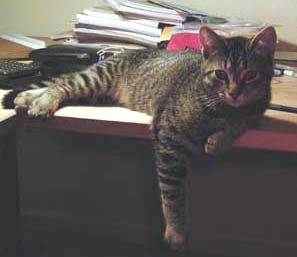On the accession of James I. to the English crown, he was himself knighted, with John his eldest son, 23d July, 1603. He served for town of Norwich in the first parliament referred to as by that King, and being in excessive repute for his skills, and learning, in 1605, was made lawyer to the Court of Wards; and the same year, July the 4th, was constituted the King’s legal professional basic; and in 1610, June 22, was appointed by letters patent, one in every of the first governours of the Charter-home, and advanced to the degree of a baronet, at the first establishment in 1611, being the ninth in precedency; and the identical year, October 26, was constituted Lord Chief Justice of the Common-Pleas, by which put up he acquitted himself with honour, and died therein December 26, 1625, being an amazing loss to the publick, as Sir Henry Spelman observes; the experiences of a number of law cases have been revealed since his demise with this title: The Reports of that Reverend and Learned Judge, the correct Honourable Sir Henry Hobart, Knt. Walter, his eldest son, succeeded at Hales-corridor, was first knighted, and was sheriff of Norfolk and Suffolk 27th Henry VIII.
John, his eldest surviving son, who was born at Norwich, April 19, 1593, and was knighted with his father; and he it was that built the current noble house, called Blickling-hall, immediately after his father’s death, for it was completed, and the chapel in it consecrated, in 1628; over the entrance are the arms and quarterings of Hobart, between two shields; on the primary, Hobart impales Bell, being the arms of his father and mom; on the 2d, Hobart impales Sidney, being the arms of himself and wife; the building is a curious brick fabrick, foursquare, with a turret at each corner; there are two courts, and with the fine library, elegant wilderness, good lake, gardens, and park, is a nice lovely seat, worthy the statement of reminiscent of make the Norfolk tour. King at Blickling, the place he knighted his eldest son Henry. Sir Milel Hobart, who was born at Plumstede, April 12, 1595, was knighted at Salisbury, by James I. August 8, 1623, and being a member in that parliament, which met March 17, 1627, he was remarkably diligent in opposing the designs of the Court, and was a kind of members, who foreseeing the dissolution of it, on March 2, 1628, forcibly held the Speaker within the chair, while they printed a protestation in the house declaring, 1, Who-ever shall usher in innovation of religion, or by favour or countenance search to extend or introduce Popery or Arminianism, or different opinion disagreeing from the truth and orthodox church, shall be reputed a capital enemy to this kingdom and commonwealth.
 Sir Henry Hobart, in 1682, who was elected a burgess for King’s-Lyn, in the parliament that met at Oxford in 1681, and sat along with his father, who served there as knight of the shire for Norfolk. Non morior, sed vivam; as to his being buried in the cathedral, I belive it is a mistake, the monument there being for the attorney general, James Hobart; I reasonably think he was interred at Blickling, which he bought of Sir Edward Clere. 28, and in my plan of the cathedral, (quantity 31;) Mr. Rice says, that he died in 1507, but he was alive and recorder in 1511, and lived to a really advanced age, and truly merited the learned Cambden’s account of him, that he deserved effectively of the church, the country, and the commonweale. Weever, fo. 861, says, that Margaret his spouse, who died in 1494, was buried at Loddon, which I do not assume, but quite, that she was interred within the cathedral at Norwich, by whom he himself was additionally buried, his tomb still remaining between the 9th and tenth north pillars; an account of which you may even see in vol.
Sir Henry Hobart, in 1682, who was elected a burgess for King’s-Lyn, in the parliament that met at Oxford in 1681, and sat along with his father, who served there as knight of the shire for Norfolk. Non morior, sed vivam; as to his being buried in the cathedral, I belive it is a mistake, the monument there being for the attorney general, James Hobart; I reasonably think he was interred at Blickling, which he bought of Sir Edward Clere. 28, and in my plan of the cathedral, (quantity 31;) Mr. Rice says, that he died in 1507, but he was alive and recorder in 1511, and lived to a really advanced age, and truly merited the learned Cambden’s account of him, that he deserved effectively of the church, the country, and the commonweale. Weever, fo. 861, says, that Margaret his spouse, who died in 1494, was buried at Loddon, which I do not assume, but quite, that she was interred within the cathedral at Norwich, by whom he himself was additionally buried, his tomb still remaining between the 9th and tenth north pillars; an account of which you may even see in vol.
 His magnificence to the noble arched roof of the cathedral church was such, that his arms have been there carved among the many principal benefactors; the historic house in Loddon, called Hales-corridor, during which he lived, was nice a part of it built by him, and continued the place of his nation residence to his death, though he had two city-homes, one in London and another in Norwich. 1633, for whom there’s a monument in Highgate church in Middlesex, the place she was buried, as was Frances, her youngest sister, who married Hewet, Esq. He was certainly a man of great bounty and generosity, as his public works testify; his elegant parish church of the Holy Trinity at Loddon, which he in-built 1495, is one testimony, within the east chancel window of which, he fastened his own and wife’s effigies on their knees, in praying postures, with their arms on their surcoats, viz. Crest and arms of Hobart, and his quartering, viz. James Hobart, the youthful son of Thomas, born at Monks Illegh in Suffolk, was the primary of the family that settled in Norfolk, and by his prudent management left a wonderful property to his posterity, and with it, this excellent character, that he was, a right good man, of nice studying and wisdom; he was brought up to the legislation, which he studied in Lincoln’s-Inn with great success, and turned of such status, that he transacted the affairs of many of the principal households in this county, when he was very young; being reader in LincolnsInn, in Lent-Term, 1447, and in Edward the Fourth’s time in 1472, Walter Le-Hert, or Lyhert, Bishop of Norwich, made him one of his executors, and it seems that he had married his niece, (who was then lifeless,) for his first wife, by whom he had no subject; for the Bishop gave him 20l. as an executor, and 100l. and a cup of silver gilt, together with his arms at the underside, on situation that he claimed nothing extra of his items.
His magnificence to the noble arched roof of the cathedral church was such, that his arms have been there carved among the many principal benefactors; the historic house in Loddon, called Hales-corridor, during which he lived, was nice a part of it built by him, and continued the place of his nation residence to his death, though he had two city-homes, one in London and another in Norwich. 1633, for whom there’s a monument in Highgate church in Middlesex, the place she was buried, as was Frances, her youngest sister, who married Hewet, Esq. He was certainly a man of great bounty and generosity, as his public works testify; his elegant parish church of the Holy Trinity at Loddon, which he in-built 1495, is one testimony, within the east chancel window of which, he fastened his own and wife’s effigies on their knees, in praying postures, with their arms on their surcoats, viz. Crest and arms of Hobart, and his quartering, viz. James Hobart, the youthful son of Thomas, born at Monks Illegh in Suffolk, was the primary of the family that settled in Norfolk, and by his prudent management left a wonderful property to his posterity, and with it, this excellent character, that he was, a right good man, of nice studying and wisdom; he was brought up to the legislation, which he studied in Lincoln’s-Inn with great success, and turned of such status, that he transacted the affairs of many of the principal households in this county, when he was very young; being reader in LincolnsInn, in Lent-Term, 1447, and in Edward the Fourth’s time in 1472, Walter Le-Hert, or Lyhert, Bishop of Norwich, made him one of his executors, and it seems that he had married his niece, (who was then lifeless,) for his first wife, by whom he had no subject; for the Bishop gave him 20l. as an executor, and 100l. and a cup of silver gilt, together with his arms at the underside, on situation that he claimed nothing extra of his items.
